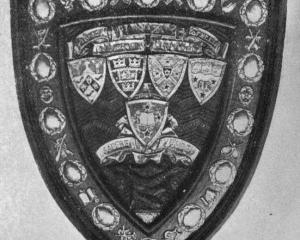For some time past a proposal has been afoot that Anderson Bay should fall into line with several other suburban boroughs and amalgamate with the city.
A meeting of residents of the district was held in the Presbyterian Church Hall last evening to discuss the pros and cons of the position. The meeting appeared to be very largely composed of ''pros'', while the upholding of the contra side of the argument was left to one gentleman - the chairman of the local Town Board.
Mr Somerville, in the course of a speech which occupied the best part of an hour, advanced a weighty array of facts and evidence why matters should remain as they are, but his eloquence was of no avail, nor were his hearers to be diverted from their steadfast conviction by the citation of two legal opinions stating that, in view of the fact that the boundaries of Anderson Bay and the City of Dunedin were not contiguous, a poll on the proposal could only be regarded as an expression of opinion of the ratepayers.
At the conclusion of a discussion lasting over two hours a motion favouring amalgamation was carried on the voices - a feeble sound of ''Noes'' coming from the rear of the hall.
• So long ago as 1899 the Marine Department commenced a systematic attempt to establish the quinnat salmon in New Zealand waters, and on the advice of Mr L. F. Ayson (Chief Inspector of Fisheries) it was decided to concentrate their efforts on one river on the east coast of the South Island - the Waitaki River.
The first shipment of ova arrived in January, 1900, and stocking the river was commenced. For several years after that large importations of ova were made, and in 1907 it was found that the fish were returning from the sea to spawn.
Since then their numbers have been found to be increasing yearly, and Mr Ayson now states that the number of running fish this year was much greater than since the commencement of the experiment, and it was also found that there was a large run of fish up the Rangitata River, about 70 miles north of the Waitaki, while some had been found as far north as the Rakaia.
Under those circumstances it had been decided to make an attempt to stock a West Coast river, and the Hokitika River had been selected. For the last four years the department had been collecting large quantities of ova from the fish in the Waitaki River, and had started to stock the West Coast river this year.
No fewer than 170,000 ova were secured. The largest quinnat salmon yet caught in New Zealand waters weighed over 32lb.
• On Sunday afternoon four young men who were fishing off the Oamaru breakwater had an exciting experience and a half hour's hard work hauling up a large skate which had been caught on one of the lines.
As it happened, the line was a very strong cod line, and the skate was held fast with a hook through a part of its mouth. The fishers at last succeeded in pulling the monster close to the steps of the breakwater, and by other methods at last brought it to land.
The skate measured 6ft 6in by 5ft, and was the best part of 2cwt. It is pronounced one of the biggest caught for a very long time, and those who worked in its landing were quite tired with their task.
• Mr D. Tannock has been on a trip to Queenstown.
He says (reports the Southland News) that the Oregon pines in the domain there have seeded freely, strong young plants coming up in hundreds. In this we have proof of the important fact that the Oregon pine is now at home in New Zealand. There is money in this, as well as beauty.
- ODT, 1.9.1915.












